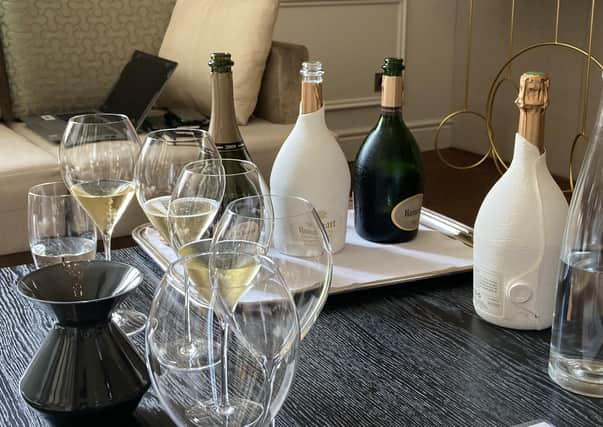The number-one Champagne house: Richard Esling, September 29


Nicolas was the nephew of Dom Ruinart, a Benedictine monk who was a contemporary of Louis XIV and had learned of the ‘wine with bubbles’ at the end of the 17th century. Inspired by his uncle’s intuition, Nicolas founded the Ruinart Champagne house and acquired the ancient ‘crayères’ – or chalk quarries – under the city of Reims, in which to store the bottles.
A number of Champagne houses have chalk galleries underground to store the maturing bottles, but those of Ruinart are an extraordinary revelation. Apart from extending for some 6km, there is one enormous cavern over 100ft below ground level, into which Chichester Cathedral would fit quite comfortably. A unique place to mature Champagne and part of the Unesco World Heritage Site, classified in 2015. A place also to experience the heart of the Champagne region and the all-important chalk substrate so important for the vines.
Advertisement
Hide AdAdvertisement
Hide AdA unique Champagne house in so many ways, including the bottle shape which recalls those produced in the 18th century, Ruinart continues to innovate. In a recent discussion with the winemaker Florence Boubee-Legrand, I was interested to learn what changes were occurring at present. The reply from Florence was that change is a continual process and that standing still is not an option. The current focus of change, however, concerns the house’s commitment to reducing its environmental impact.
Committed to fighting climate change, Maison Ruinart has been a pioneer in the field of sustainable viticulture, environmental protection and the promotion of biodiversity. It is currently engaged in a project of agroforestry, involving planting hundreds of specific trees among the vines, with the double objective of reducing CO₂ and increasing biodiversity, itself leading to greater sustainability. Over the past 10 years, the Maison has reduced its use of chemicals in the vineyard by 40 per cent and eliminated the use of herbicides.
The most recent example of the spirit of innovation of Maison Ruinart, involves an English company based on the outskirts of another Unesco World Heritage site – The Lake District. This innovation concerns packaging, with a two-year collaborative project resulting in what is known as ‘the second skin case’. As a replacement for the cardboard presentation box, the James Cropper factory developed the case without plastic or glue, made from natural fibres of wood from eco-managed European forests. The case is designed to preserve the integrity of Ruinart taste and illustrates the Maison’s sustainable commitment. Made of 99 per cent cellulose fibres, it is nine times lighter than its predecessor and reduces the carbon footprint by 60 per cent.
Light, aesthetic and functional, the second skin envelope’s design is inspired by the way in which hotel managers wrap a white towel around champagne bottles. Suitable for storage for several months in the refrigerator, the case retains its integrity in the humidity of a cellar and up to three hours in a bucket of ice.
Advertisement
Hide AdAdvertisement
Hide AdAll of which serves to underline the utter refinement of Champagne Ruinart. The entire range evokes elegance and subtlety, together with intriguing complexity and delicacy. With all styles being chardonnay-focused, the blanc de blanc is legendary, with Dom Ruinart 2009 Blanc de Blanc exquisite and outstanding.
Richard Esling is a wine consultant, agent, writer and educator. He runs agency and consultancy WineWyse, is founder and principal of Sussex Wine Academy and is chairman of Arundel Wine Society
Comment Guidelines
National World encourages reader discussion on our stories. User feedback, insights and back-and-forth exchanges add a rich layer of context to reporting. Please review our Community Guidelines before commenting.